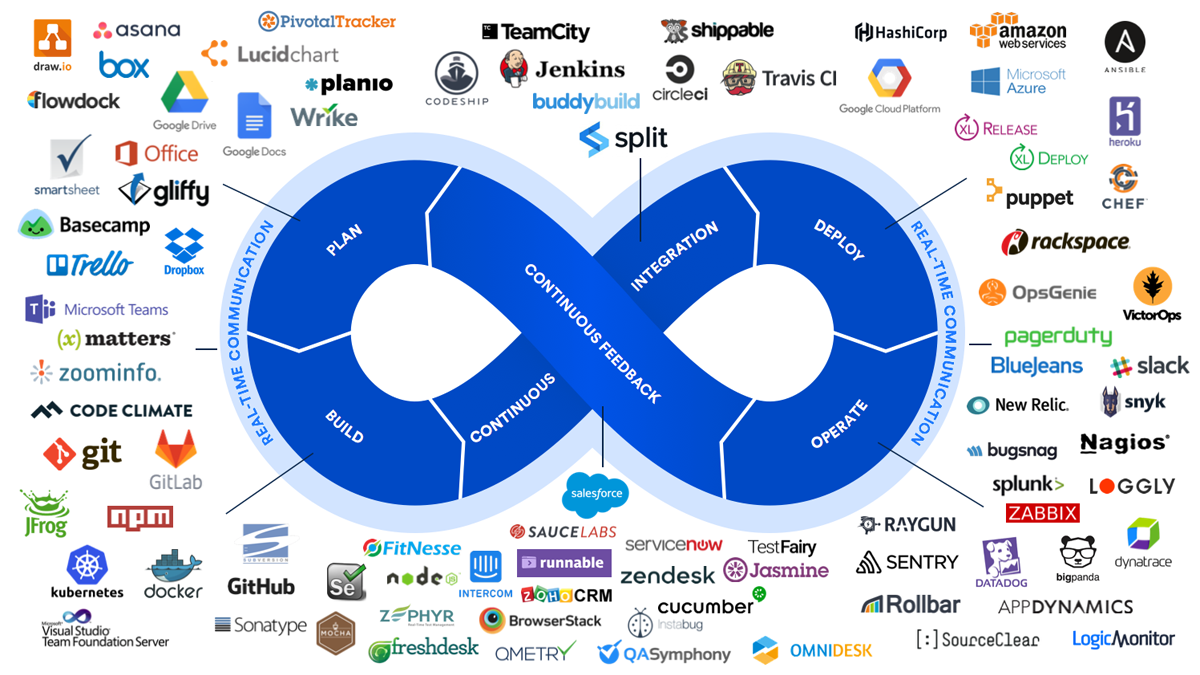There was a time when developers and operations were always gnawing at each other’s throats. The production code was never updated on time, while the administrators always got irked over the ever piling server requests. As the battle ensued, it became all the more necessary to come up with an appropriate tool box, which could help rid both the parties of these battle lines. This is where DevOps comes into the picture. DevOps is well configured to provide services which range from application portability to configuration management. While the list of services doesn’t end, it definitely makes life much easier for the end users. However, without the right kind of tools, even DevOps can’t make it to their destined uses.
Here are some of the names which stand out amongst the list of DevOps tools:
1.Chef: Like the gourmet world, Chef is synonymous with the term recipes. It is a system and Cloud infrastructure, which automates an entire building, by deploying and managing infrastructure through short repeatable scripts, often termed as recipes. But the real power comes into play, when pluggable configuration modules are employed. The chef can be used to ease out complex tasks, perform automation, which can often prove to be heavy on resources, efforts and time.
2.Docker: With Docker, you can expect portability, which is made possible through its unique containerization technology, often found in self-contained units. The tool consists of a Docker Engine, a lightweight runtime and packaging tool and Docker Hub, which is essentially a cloud based service application, encompassing the concept of application sharing and workflow automation.
3.Puppet:Puppet Enterprise, a unit of Puppet Labs, allows data orchestration by providing automation configurations and machine management. The latest version, Puppet 3.7, features Puppet Apps, and Node Manager, which helps manage large number of variable, dynamic systems. The puppet is also available as an open-source software.
4.Jenkins:Being an open-source standard for managing DevOps, Jenkins allows everything, right from delivering code to production to source code management. Since it is a pluggable, de facto engine, it proves to be an ecosystem with more than 1100 plugins for the users. Jenkins has proved to be a continuous delivery and a continuous integration for developers.
5.ELK: ELK, by Elastic, is a No SQL database that is made on the Lucence search engine. ELK Stack is not just one tool, but a combination of three different tools rolled into one. ELK stands for Elastic search, Logstash, and Kibana; all three are open source projects, which are individually maintained by Elastic.
6.Cassandra: Apache Cassandra is considered to be a good choice, when you need scalability, availability without worrying about performance. Through this tool, data is automatically replicated between multiple nodes. While single system replication is supported, one can also perform multiple systems replications. Thankfully, there are no single points of failure, which makes it a great DevOps tool.
7.Ansible: Conceived by Michael, Ansible was released in the year 2012. It is a configuration management platform which leverages Python to configure systems. The systems are expressed in the Ain't Markup Language format, which is a construct, commonly known as a Playbook. A Playbook has been tweaked to provide configurations for single and multiple systems at the same time.
8.Splunk: If real time issue fixing is what you are looking for, then Splunk is your first-time solution. It allows visualization of data, while taking cues from production environments. All this can be done without requiring access to production machines. With Splunk, users can access and embrace processes, which include successful integration and deployment.
9.Salt Stack: Salt Stack helps in data automation, cloud building, server provisioning and application configuration. Since this tool is, an event drives automation tool. It enables automation within the DevOps workflow. It features around 200 virtual machines, each of which is capable of running in the staging and production environment.



